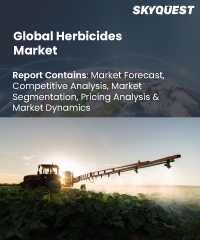
Product ID: SQMIG15A2110
Report ID:
SQMIG15A2110 |
Region:
Global |
Published Date: February, 2024
Pages:
157
|
Tables:
90 |
Figures:
76
We respect your privacy rights and safeguard your personal information. We prevent the disclosure of personal information to third parties.
Herbicides Market size was valued at USD 30.32 billion in 2019 and is poised to grow from USD 31.59 billion in 2023 to USD 45.75 billion by 2031, growing at a CAGR of 4.2% in the forecast period (2024-2031).

Product ID: SQMIG15A2110